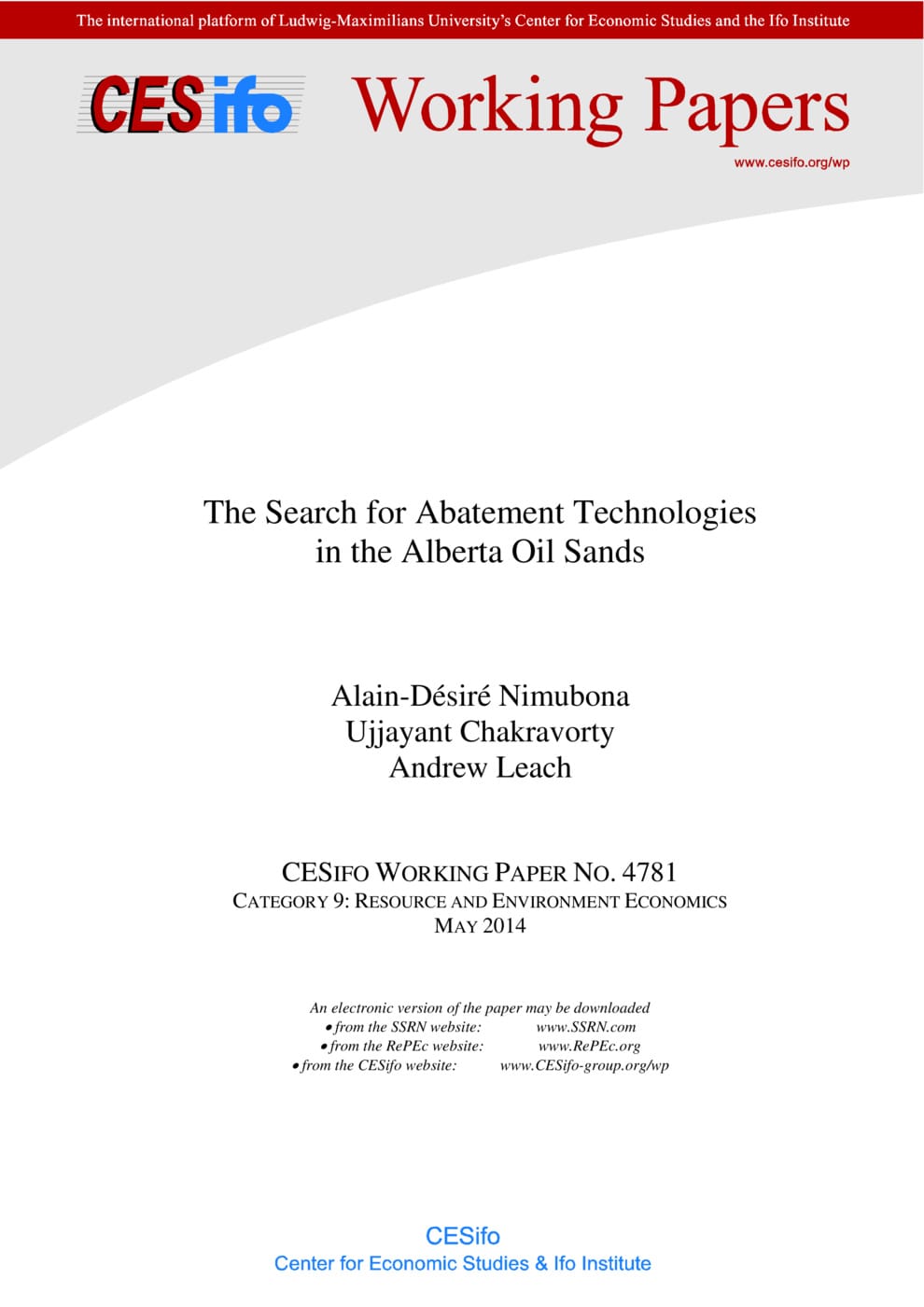The Search for Abatement Technologies in the Alberta Oil Sands
CESifo, Munich, 2014
CESifo Working Paper No. 4781

We develop a three-stage model of abatement technology search, adoption, and deployment. Using this model, which draws on search theory tools more frequently used in labour and monetary economics, we compare market-based and command-and-control pollution control instruments with respect to the incentives each provides for abatement technology search and adoption, expected emissions reductions, and expected compliance costs. We motivate our work by examining firm-level decisions in the oil sands region of Alberta, Canada, where firms are developing new abatement technologies to reduce fluid tailings associated with mining operations. We show that the polluting firm always has more incentives to search for and adopt a more efficient abatement technology under either an emissions tax or a tradeable permit system than under an equivalently stringent emissions standard. We also show that while expected incentives for innovation are comparable under emissions taxes and tradeable permit regimes, the likelihood for total future compliance costs to be reduced after an increase in the stringency of environmental policy - the so-called Porter hypothesis - is higher with a tradeable permit regime.
Resources and Environment
Energy and Climate Economics